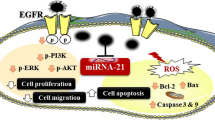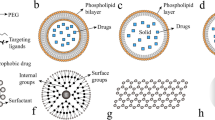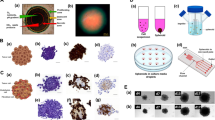Summary
Compared with monolayer culture, tumour cells cultured as multicellular aggregates (spheroids) exhibit much higher levels of resistance to chemotherapeutic agents, a phenomenon known as multicellular resistance (MCR). Associated with multicellular aggregates is a heterogeneous microenvironment characterised by gradients in oxygen, pH, and nutrients. We previously showed that nitric oxide (NO) signalling plays an important role in the regulation of chemosensitivity in cancer cells cultured as monolayer, and that hypoxia increases resistance to anti-cancer agents largely through a mechanism involving the inhibition of NO signalling. The goal of the present study was to determine whether NO mimetics chemosensitize breast cancer cells in spheroid cultures. Survival of MDA-MB-231 breast carcinoma cells was determined by clonogenic assay following spheroid culture, doxorubicin exposure, and NO mimetic administration. When spheroids were incubated for 24 h with the NO mimetics diethylenetriamine/nitric oxide adduct (DETA/NO) and glyceryl trinitrate (GTN), cell survival after doxorubicin (200 μM) exposure was decreased by 33% (p<0.006) and by up to 47% (p<0.02), respectively. Nitric oxide-mediated signalling involves the generation of the second messenger cyclic guanosine monophosphate (cGMP). Administration of a non-hydrolysable cGMP analogue, 8-Bromo-cGMP, significantly decreased MCR (p<0.04). The effect of NO mimetic exposure on tumour cell chemosensitivity was not due to increased penetration of doxorubicin into spheroids, nor was it associated with an increase in cell proliferation. These results suggest that NO mimetics attenuate MCR to doxorubicin through a mechanism involving cGMP-dependent signalling. Therefore, NO-mimetics may potentially be used as chemosensitizers in cancer therapy.
Similar content being viewed by others
References
Kobayashi H, Man S, Graham CH, Kapitain SJ, Teicher BA, Kerbel RS Acquired multicellular-mediated resistance to alkylating agents in cancerProc Natl Acad Sci USA 90: 3294–3298, 1993
Sutherland RM, 1988 Cell and environment interactions in tumor microregions: the multicell spheroid modelScience 240: 177–184
Desoize B, Gimonet D, Jardillier JC, 1998 Multicellular resistance: another mechanism for multidrug resistance? Bull Cancer 85: 785
Matthews NE, Adams MA, Maxwell LR, Gofton TE, Graham CH, 2001 Nitric oxide-mediated regulation of chemosensitivity in cancer cellsJ Natl Cancer Inst 93: 1879–1885
Frederiksen LJ, Siemens DR, Heaton JP, Maxwell LR, Adams MA, Graham CH, 2003 Hypoxia induced resistance to doxorubicin in prostate cancer cells is inhibited by low concentrations of glyceryl trinitrateJ Urol 170: 1003–1007
Hanafy KA, Krumenacker JS, Murad F, 2001 NO, nitrotyrosine, and cyclic GMP in signal transductionMed Sci Monit 7: 801–819
Griffith OW, Stuehr DJ, 1995 Nitric oxide synthases: properties and catalytic mechanism Annu Rev Physiol 57: 707–736
Whorton AR, Simonds DB, Piantadosi CA, 1997 Regulation of nitric oxide synthesis by oxygen in vascular endothelial cells Am J Physiol 272: L1161-L1166
McCormick CC, Li WP, Calero M, 2000 Oxygen tension limits nitric oxide synthesis by activated macrophages. Biochem J 350: 709–716
Stuehr DJ, 1999 Mammalian nitric oxide synthasesBiochim Biophys Acta 1411: 217–230
Alderton WK, Cooper CE, Knowles RG, 2001 Nitric oxide synthases: structure, function and inhibitionBiochem J 357: 593–615
Lown JW, 1993 Anthracycline and anthraquinone anticancer agents: current status and recent developmentsPharmacol Ther 60: 185–214
Denninger JW, Marletta MA, 1999 Guanylate cyclase and the NO/cGMP signaling pathwayBiochim Biophys Acta 1411: 334–350
Riganti C, Miraglia E, Viarisio D, Costamagna C, Pescarmona G, Ghigo D, Bosia A, 2005 Nitric oxide reverts the resistance to doxorubicin in human colon cancer cells by inhibiting the drug effluxCancer Res 65: 516–525
Desoize B, Jardillier J, 2000 Multicellular resistance: a paradigm for clinical resistance? Crit Rev Oncol Hematol 36: 193–207
Dhar A, Brindley JM, Stark C, Citro ML, Keefer LK, Colburn NH, 2003 Nitric oxide does not mediate but inhibits transformation and tumor phenotypeMol Cancer Ther 2: 1285–1293
Fung HL, 2004 Biochemical mechanism of nitroglycerin action and tolerance: is this old mystery solved? Annu Rev Pharmacol Toxicol 44: 67–85
Chen Z, Zhang J, Stamler JS, 2002 Identification of the enzymatic mechanism of nitroglycerin bioactivationProc Natl Acad Sci USA 99: 8306–8311
McDonald BJ, Bennett BM, 1993 Biotransformation of glyceryl trinitrate by rat aortic cytochrome P450Biochem Pharmacol 45: 268–270
Lau DT, Chan EK, Benet LZ, 1992 Glutathione S-transferase-mediated metabolism of glyceryl trinitrate in subcellular fractions of bovine coronary arteriesPharm Res 9: 1460–1464
Gomez-Lechon MJ, Jover R, Donato T, Ponsoda X, Rodriguez C, Stenzel KG, Klocke R, Paul D, Guillen I, Bort R, Castell JV, 1998 Long-term expression of differentiated functions in hepatocytes cultured in three-dimensional collagen matrixJ Cell Physiol 177: 553–562
Wu FJ, Friend JR, Remmel RP, Cerra FB, Hu WS, 1999 Enhanced cytochrome P450 IA1 activity of self-assembled rat hepatocyte spheroidsCell Transplant 8: 233–246
Nagai F, Kato E, Tamura HO, 2004 Oxidative stress induces GSTP1 and CYP3A4 expression in the human erythroleukemia cell line, K562Biol Pharm Bull 27: 492–495
Xu J, Ma M, Purcell WM, 2003 Biochemical and functional changes of rat liver spheroids during spheroid formation and maintenance in culture: II. nitric oxide synthesis and related changesJ Cell Biochem 90: 1176–1185
Wartenberg M, Schallenberg M, Hescheler J, Sauer H, 2003 Reactive oxygen species-mediated regulation of eNOS and iNOS expression in multicellular prostate tumor spheroids Int J Cancer 104: 274–282
Algara-Suarez P, Espinosa-Tanguma R, 2004 8Br-cGMP mediates relaxation of tracheal smooth muscle through PKABiochem Biophys Res Commun 314: 597–601
Haase A, Bicker G, 2003 Nitric oxide and cyclic nucleotides are regulators of neuronal migration in an insect embryoDevelopment 130: 3977–3987
Teicher BA, 1994 Hypoxia and drug resistanceCancer Metastasis Rev 13: 139–168
St Croix BS, Rak JW, Kapitain S, Sheehan C, Graham CH, Kerbel RS, 1996 Reversal by hyaluronidase of adhesion-dependent multicellular drug resistance in mammary carcinoma cellsJ Natl Cancer Inst 88: 1285–1296
Green SK, Karlsson MC, Ravetch JV, Kerbel RS, 2002 Disruption of cell–cell adhesion enhances antibody-dependent cellular cytotoxicity: implications for antibody-based therapeutics of cancerCancer Res 62: 6891–6900
Green SK, Francia G, Isidoro C, Kerbel RS, 2004 Antiadhesive antibodies targeting E-cadherin sensitize multicellular tumor spheroids to chemotherapy in vitroMol Cancer Ther 3: 149–159
Acknowledgements
We thank Ms. Lori Maxwell for her technical support as well as Mr. Matt Gordon for his assistance with the flow cytometric analysis. This work was supported by a grant from the Canadian Institutes of Health Research and a research contract from Cellegy Pharmaceuticals Inc.
Author information
Authors and Affiliations
Corresponding author
Rights and permissions
About this article
Cite this article
Muir, C., Adams, M. & Graham, C. Nitric oxide attenuates resistance to doxorubicin in three-dimensional aggregates of human breast carcinoma cells. Breast Cancer Res Treat 96, 169–176 (2006). https://doi.org/10.1007/s10549-005-9076-9
Published:
Issue Date:
DOI: https://doi.org/10.1007/s10549-005-9076-9




